Original page from English Dance & Song, Spring 1966
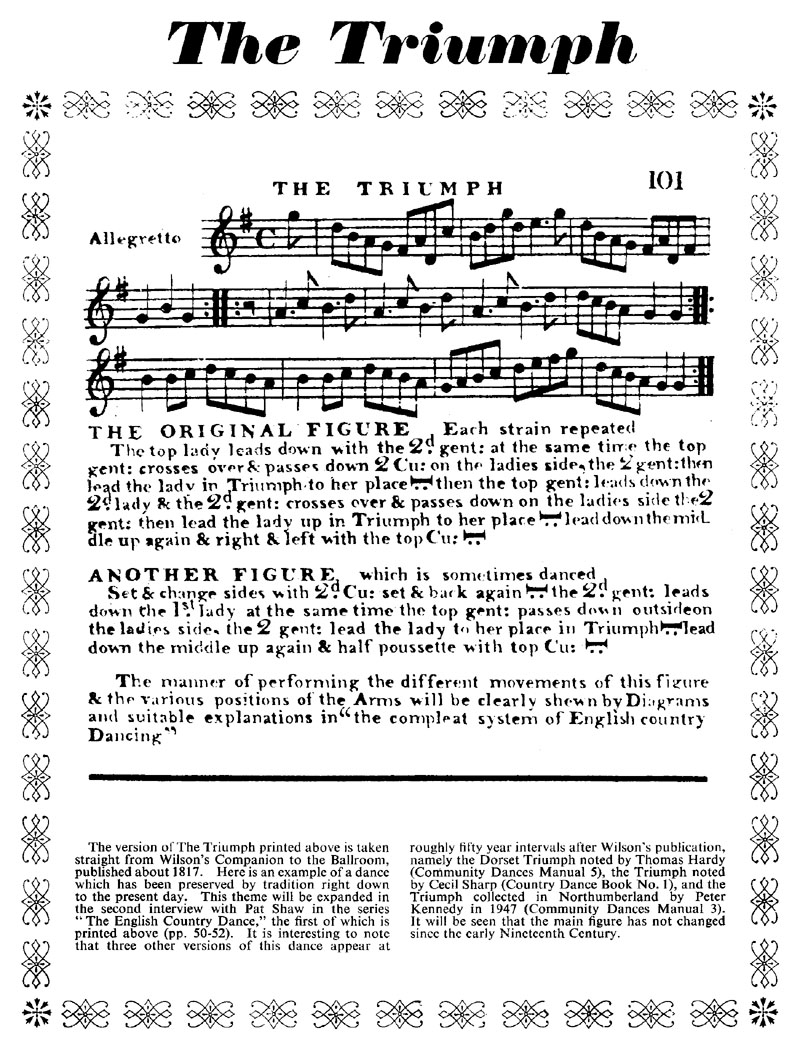
Wilson's diagrams from "The Complete System of English Country Dancing"
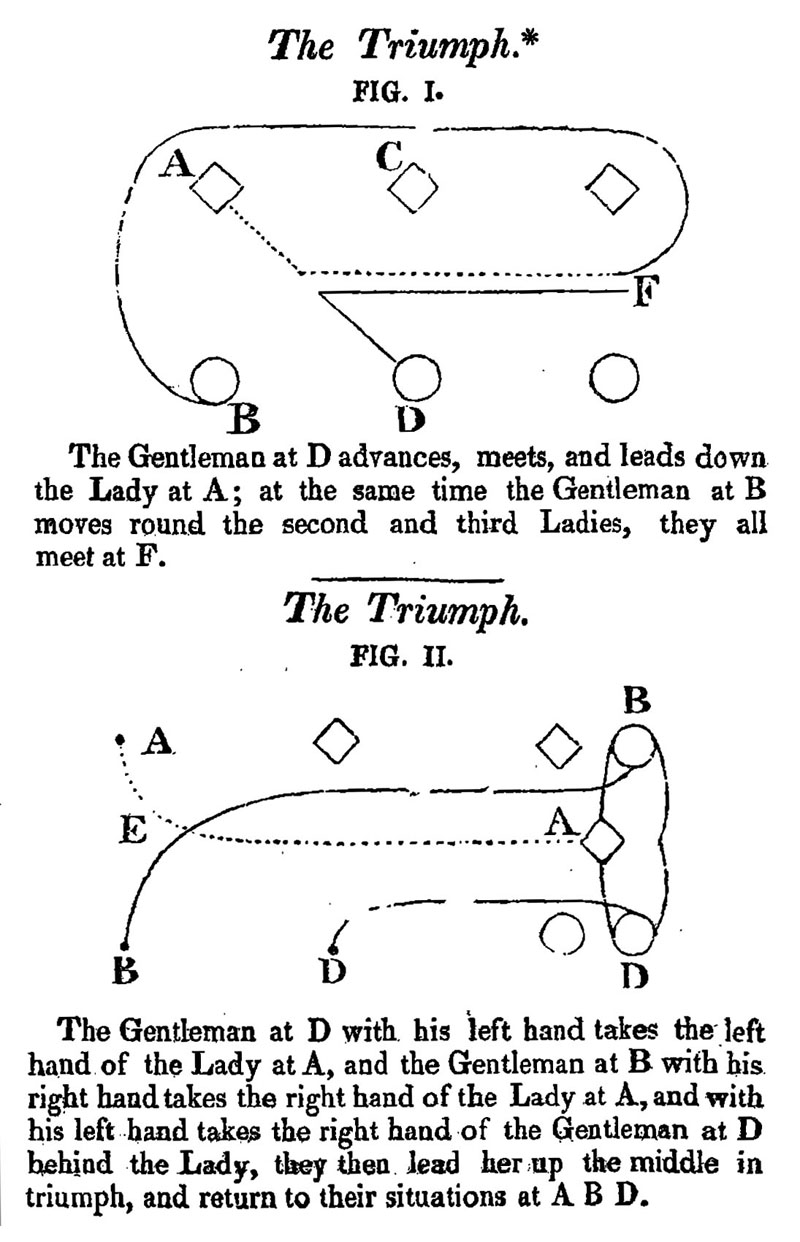
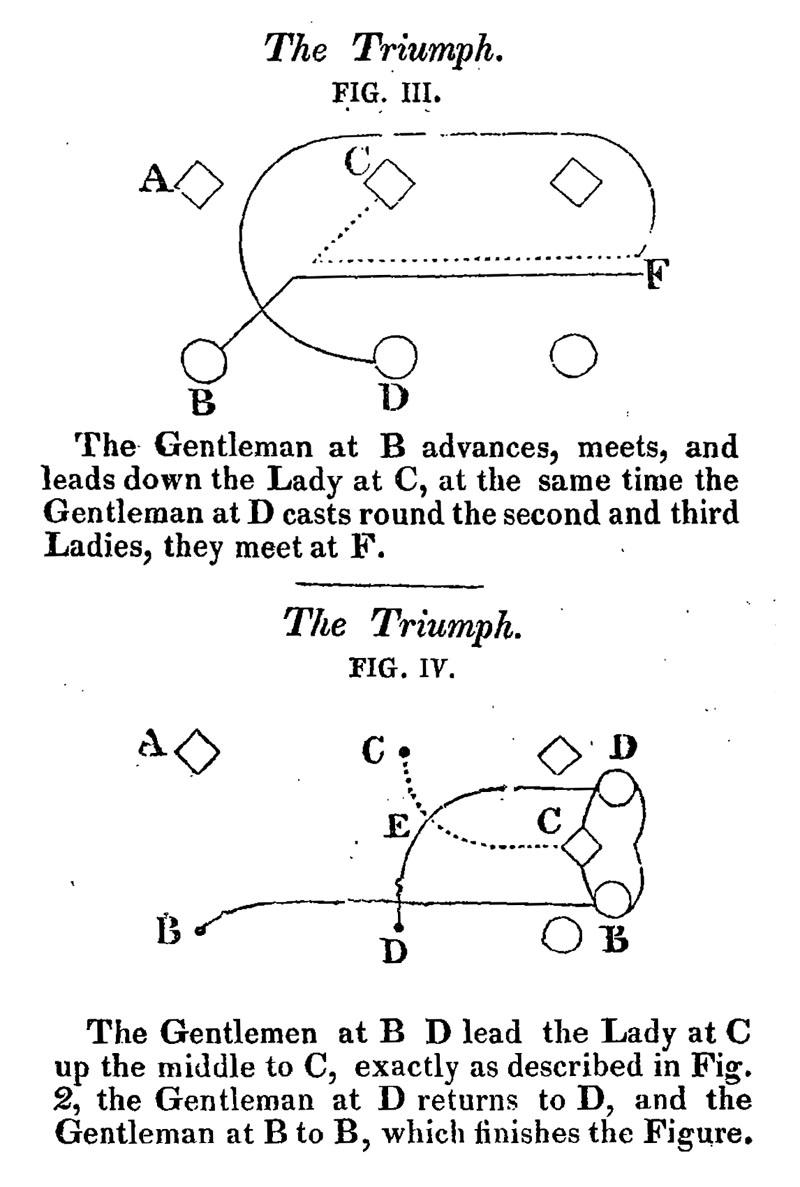
Back to Dance Index
| A1 | Second Corners take Left Hands & Lead down past two couples WHILE #1 Man: Cross Over and Cast Down past two ladies In a line of three #1 Man takes right hands with Lady #1, #2 Man takes left hands with her; the two men make an arch above the lady with their other hands Lead Up in Triumph to place, the Lady passing in front of Man #1 |
| B1 | Repeat for First Corners and #2 Man who waits for them to pass him before his Cross Over After the Lead Up, #2 Man cross to his place behind the others |
| C1 | #1s Lead Down (4) & Back (4) into Second Place - #2s Move Up Top Four: Second Corners Cross Over by the Left Shoulder WHILE First Corners Cross Over by the Right Shoulder (First Corners must let Second Corners cross first) (4) Repeat (4) |
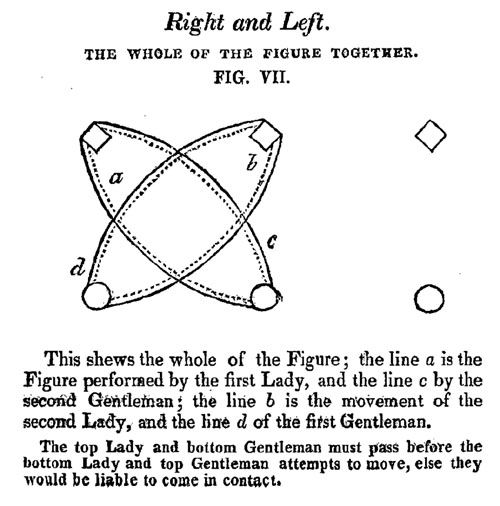
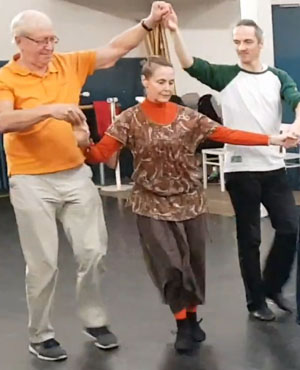
| A1 | Second Corners Set & Turn Single; First Corners the same |
| B1 | Second Corners take Right Hands: Lead down past two couples and Wheel Around WHILE #1 Man Casts Down the Men's side In a line of three #1 Man takes left hands with Lady #1, #2 Man has right hands with her; the two men make an arch above the lady with their other hands Lead Up in Triumph to place, #1 Man turning #1 Lady with his left hand |
| C1 | All Lead Down by the right hand, the Ladies turn AC under the arms, Dance Up, #1s Casting down one place |
| A1 | Second Corners take Left Hands & Lead down past two couples WHILE #1 Man: Cross Over and Cast Down past two ladies In a line of three #1 Man takes right hands with Lady #1, #2 Man takes left hands with her; the two men make an arch above the lady with their other hands Lead Up in Triumph to place, the Lady passing in front of Man #1 |
| A2 | Repeat for First Corners and #2 Man who waits for them to pass him before his Cross Over After the Lead Up, #2 Man cross to his place behind the others |
| B1 | #1s Lead Down & Back to place |
| C1 | #1s & #2s Swing & Change: Polka, Swing or Two Hand Turns to change place CW |
| A1 | #1s Lead Down & Back (#2s may follow and make an Arch for #1s so that all finish at Home)
OR Star Right; Star Left |
| B1 | Second Corners take Left Hands & Lead down; Turn Alone but keeping hold Left Hands WHILE #1 Man follows down the centre, crossing to the other side of the lady In a line of three #1 Man takes right hands with Lady #1, #2 Man has left hands with her; the two men make an arch above the lady with their other hands Lead Up in Triumph to place, the Lady passing in front of Man #1 |
| C1 | Swing & Change: Polka (or Swing) around each other AC (once and a) half |
| A1 | Second Corners take Left Hands & Lead down; Turn Alone but keeping hold Left Hands WHILE #1 Man follows down the centre, crossing to the other side of the lady In a line of three #1 Man takes right hands with Lady #1, #2 Man has left hands with her; the two men make an arch above the lady with their other hands Lead Up in Triumph to place, the Lady passing in front of Man #1 |
| A2 | First Coners the same, Man #2 falling back into place at the end |
| B1 | #1s Lead Down & Back; Cast down one place - "round 2nd couple who give a helping arm, as is usual in the American longways, never in the English". |
| B2 | Right & Left Through & Back |



I'd love to hear from you if you know anything more about this dance, its composer, its style, or its history.
Feedback is very welcome on any aspect of these dances or Web pages.
Please contact John Sweeney with your comments.
